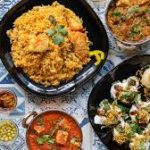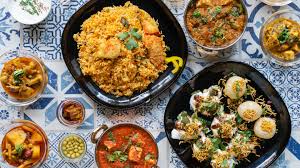Art of Spices have been integral to culinary traditions for centuries, transforming simple ingredients into culinary masterpieces. They are not just seasonings but a reflection of culture, history, and creativity. The art of using spices goes beyond flavoring food; it is about crafting dishes that tell stories, evoke emotions, and create unforgettable experiences. This article delves into the world of spices and their role in creating signature dishes that have delighted palates across the globe.
Table of Contents
ToggleThe Essence of Spices in Culinary Traditions
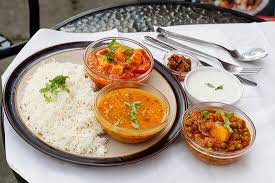
Art of Spices have a profound influence on the identity of regional cuisines. They are often the backbone of dishes, shaping their aroma, taste, and appeal. From the fiery chilies of Mexico to the aromatic cardamom of India, each spice has a unique character that defines the culinary landscape of its region.
Art of Spices are more than just ingredients; they are carriers of history. The spice trade was a pivotal part of global history, driving exploration, commerce, and cultural exchanges. This historical significance is embedded in the dishes that use these spices, making every bite a journey through time.
Signature Dishes That Celebrate Art of Spices
Many iconic dishes owe their fame to the harmonious blend of Art of Spices. These dishes are not just meals but cultural icons that showcase the art of spice blending.
- Indian Curry: Indian curries are a symphony of spices, with each region showcasing its unique style. Garam masala, turmeric, cumin, and coriander are just a few of the spices that create the rich and complex flavors of this dish. Whether it’s the creamy butter chicken of the north or the spicy vindaloo of Goa, Indian curries highlight the versatility and power of spices.
- Moroccan Tagine: This slow-cooked stew is a testament to the Moroccan mastery of spices. Saffron, cinnamon, and ginger are commonly used, creating a sweet and savory flavor profile that is both comforting and exotic. The use of a traditional tagine pot enhances the melding of flavors, making each bite a sensory delight.
- Mexican Mole: Mole sauce is a complex blend of chilies, chocolate, and Art of Spices like cinnamon and cloves. This dish is a celebration of balance, with the heat of the chilies perfectly countered by the sweetness of chocolate. Mole exemplifies the ingenuity of Mexican cuisine and its deep connection to spices.
The Art of Blending Art of Spices
Creating a signature dish with Art of Spices requires skill and an understanding of balance. The art of spice blending is a delicate process, where too much or too little of a single spice can alter the entire flavor profile.
Spice blends like garam masala, za’atar, and ras el hanout are examples of carefully curated mixes that elevate dishes. These blends are often closely guarded family secrets, passed down through generations. Each blend tells a story of heritage and culinary expertise.
The Role of Spices in Enhancing Health
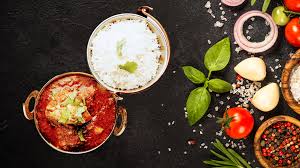
Beyond flavor, Art of Spices also offer numerous health benefits, making them invaluable in cooking. Turmeric, for example, is known for its anti-inflammatory properties, while ginger aids digestion. Cloves are rich in antioxidants, and cinnamon helps regulate blood sugar levels.
Many traditional dishes were designed not only for taste but also for their medicinal properties. Ayurvedic and traditional Chinese medicine both incorporate Art of Spices to promote wellness, demonstrating the holistic role spices play in culinary traditions.
Modern Interpretations of Spice-Driven Dishes
While traditional dishes continue to be celebrated, modern chefs are reimagining the use of spices in innovative ways. Fusion cuisine, for instance, combines spices from different cultures to create unique dishes. A prime example is the use of Japanese shichimi togarashi in Western-style roasted meats, adding a layer of umami and heat.
Molecular gastronomy has also embraced spices, using techniques like spherification and foams to highlight their flavors in new formats. These modern approaches demonstrate the adaptability of spices in contemporary culinary art.
Spices as a Form of Cultural Expression
Art of Spices are deeply tied to culture and identity. They are often associated with rituals, celebrations, and traditions. For example, saffron is used in many celebratory dishes in Persian and Indian cuisines, symbolizing wealth and festivity. Similarly, cinnamon is a staple in holiday baking in Western cultures, evoking feelings of warmth and nostalgia.
The cultural significance of spices extends beyond the kitchen. They are used in perfumes, traditional medicines, and even religious ceremonies. This multifaceted role underscores their importance in human history.
Sustainability and Ethical Sourcing of Spices
As the demand for Art of Spices grows, sustainability and ethical sourcing have become critical considerations. Many spices are cultivated in regions facing environmental and socio-economic indrabet challenges. Ensuring fair trade and sustainable farming practices helps preserve the livelihoods of spice farmers and protects the environment.
Chefs and consumers alike are becoming more conscious of the origins of their Art of Spices, prioritizing ethical brands and supporting initiatives that promote sustainability. This shift is not only beneficial for the planet but also ensures the quality and authenticity of the spices used in cooking.
Exploring Spices Through Culinary Travel
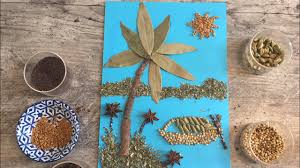
Culinary travel has gained popularity as people seek to experience the essence of a culture through its food. Visiting spice markets in Morocco, cooking classes in India, or chili farms in Mexico allows travelers to connect with the origins of spices and their role in local cuisines.
These experiences provide a deeper appreciation for the labor and artistry involved in spice cultivation and usage. They also inspire home cooks to experiment with new flavors, bringing a piece of their journey into their own kitchens.
The Future of Spices in Global Cuisine
The art of spices continues to evolve as chefs and food enthusiasts push the boundaries of flavor. With the rise of plant-based diets and health-conscious eating, spices play a pivotal role in creating flavorful and satisfying dishes without relying on animal products or excessive fats.
Technological advancements in food science are also unlocking new ways to extract and use spice flavors. From spice-infused oils to encapsulated flavors, these innovations are expanding the possibilities of spice-driven cuisine.
Conclusion
The art of spices is a celebration of flavor, history, and creativity. It bridges cultures, tells stories, and enhances both the taste and nutritional value of food. Signature dishes that rely on Art of Spices are more than just meals; they are an expression of culinary mastery and cultural heritage.
As we continue to explore and innovate with Art of Spices, their importance in global cuisine remains steadfast. Whether through traditional recipes or modern interpretations, spices will always have the power to transform food into an extraordinary experience.

